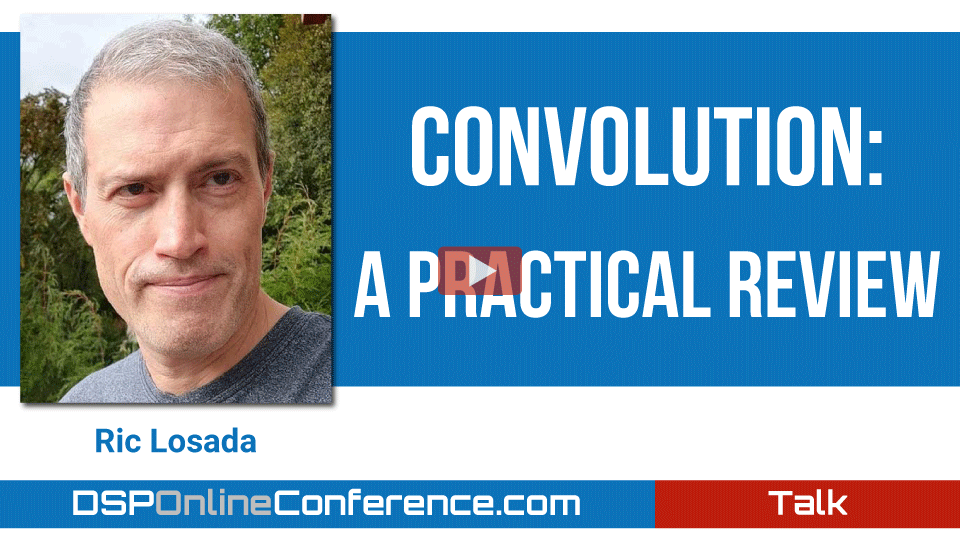Home > On-Demand Archives > Talks >
Convolution: A Practical Review
Ric Losada - MathWorks - Watch Now - DSP Online Conference 2021 - Duration: 01:07:01

This session focuses on the practical aspects of convolution and FIR filtering and some of its applications, from algorithm exploration through to real-time signal processing.
We discuss the tradeoffs between time and frequency domain implementations, including latency and computational cost. For both domains we review the best-known implementation variants and some of the hardware technologies most used for performance acceleration.
the longest room acoustic impulse response i ever heard was a cathedral in England... they wanted to show how the echos significantly altered how a modern piece of music would sound in a long echo environment...i think it was a matlab based demo....
On circular buffers: I believe you can get rid of the if statement with a modulus operator to recenter back to start if the memory is aligned, but ymmv whether branch mispredictions vs. division is cheaper.
On slide SIMD Implementation: When doing SIMD, doesn't each register still rely on the prior results (the other registers) to finish? Did we shift gears away from the partial-parallel you were talking about for ASICs?





one very effective option... do the 5-to- down sampling in polyphase and then 1-to-5 interpolator to keep same input sample rate but have all operations at reduced sample rate.... always beats the IFIR filter which raises the sample rate and uses wider registers to hold the zero packed data.